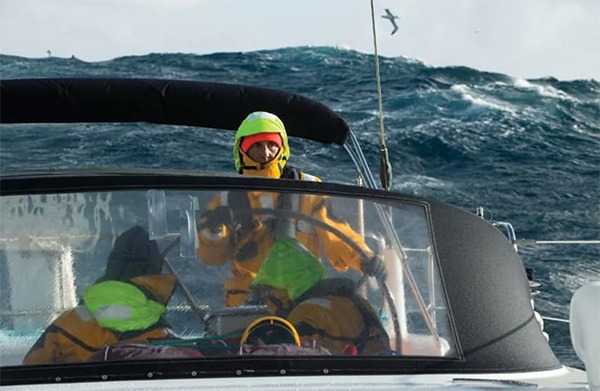
“We must free ourselves of the hope that the sea will ever rest. We must learn to sail in high winds.”
— Aristotle Onassis, Shipping Magnate
Storm drogues and sea anchors are a great tool to mitigate rough seas. They ensure you stay in control of your vessel where a reduction of speed is needed or a position over ground needs to be maintained. Although the terms “drogue” and “sea anchor” are often used interchangeably, the fact is that the reduction of speed is just about the only similarity between drogues and sea anchors. So let us have a look at what sets aside a drogue from a sea anchor…
Common practices
Sea anchors


Drogues


Sea anchors
As mentioned, sea anchors are deployed from the bow in order for the yacht to point into the wind. They are often used to wait out storms. They can also be used to “stop” the yacht as a temporary measure if the yacht is drifting towards a shoal or obstacle where both engine and sail power are unavailable. In essence, sea anchors (as the name suggests) are more like conventional anchors where depth or other circumstances prevent us from deploying a hook.
As opposed to years ago, where sea anchors were often shaped like drogue type cones, recent years has seen a shift towards sea anchors as “parachute-like” in shape and generally much larger than drogues. Therefore, the term sea anchor and para-anchor have become interchangeable. Conversely, the term drogue and sea anchor are now almost mutually exclusive.
Sea anchors can also assist in “heaving to” to further reduce drift by attaching another line to the rode which comes back midship so the skipper can control the yaw.
There are plenty of sailors that argue that the deployment and retrieval of a sea anchor poses more problems than it solves.
- For a para-anchor to work most effectively, they need to have a diameter of one-third of the length of your yacht. That is a lot of gear to deploy in what are usually less than calm conditions. Although the deployment can be practised, there is a good chance that the para-anchor or its rode will drag under your vessel. Retrieving a para-anchor normally posses less risk due to the fact that the conditions have improved.
- The size of your para-anchor also leads to large pulling forces on the cleats or any anchoring points on your yacht. A dedicated cleat enforced appropriately is required to absorb the forces at play. Not allowing for this will undoubtedly lead to underperformance of the para-anchor manifesting itself as excessive yaw, or damage to your yacht.
Drogues
In following seas, a drogue’s main function is to maintain control of your yacht by reducing speed and to orientate your yacht in such a manner as to reduce the chance of broaching and consequent knock-down, capsizing or pitchpoling. This is achieved by connecting your drogue to stern with a bridle to port and starboard.
Most sailors can attest to other uses of drogues including, but not exclusively:
- Assist in steering the yacht in heavy weather or where conventional steering is not achievable
- Reduce the “jerk effect” when your yacht is being towed
- To apply correct yaw in assisting heaving-to
Types of drogues
There are numerous drogue systems around. I have seen tyres, milk crates or buckets being used but off-shore sailors should carry a drogue of an appropriate size and quality to suit their yacht.
In essence, your choice is a single drogue of a larger size or a Jordan Series Drogue.
Conventional drogue
The size of a conventional drogue depends on the size of your yacht. The rode needs to be longer than the wavelength you are experiencing at the time to avoid the drogue being dragged through a falling wave and ending up above the waterline.

A popular option with modern sailors is the Jordan Series Drogue. This type of drogue is simply a series of many small cones attached to a long line with a weight such as a chain or a small anchor attached to the end.

When managed well, the deployment is relatively simple but the Jardon Series drogue is rather bulky…

The Jorden Series drogue can be purchased in either a ready to use version or a DIY kit.
Happy and safe sailing…